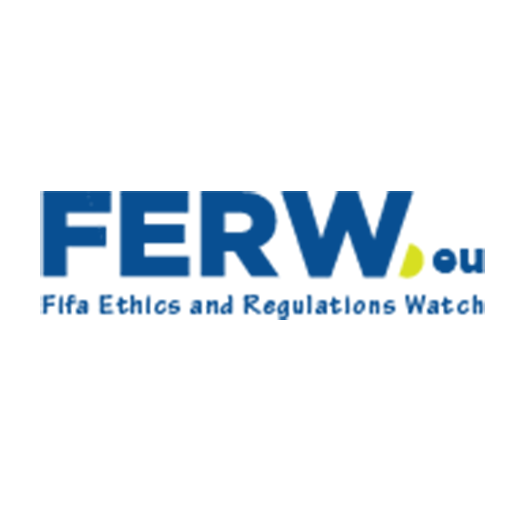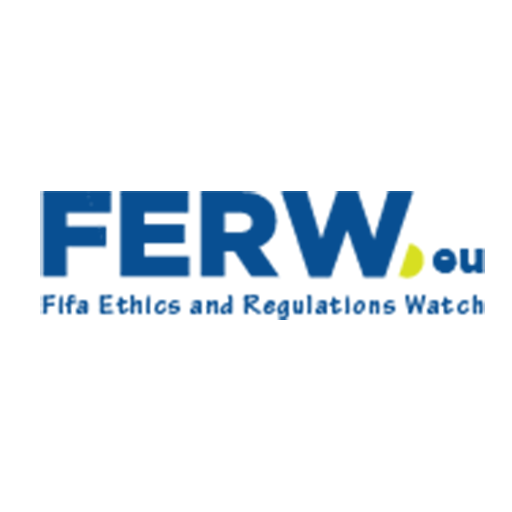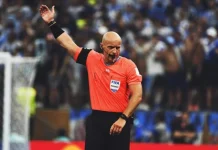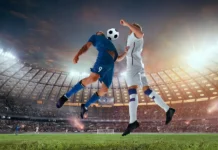With the intention of achieving improved efficiency, efficiency, and transparency, the 2025 amendments to the Laws of the Game of football, led by FIFA and the International Football Association Board (IFAB) have come with a lot of hype. With global football more commercially saturated and politically sensitive than ever before, these new regulations touch not only technical gameplay but also deeper questions about governance, inclusivity, and equitable access to the sport’s benefits.
Although FIFA terms the reforms as being inclusive and progressive, various stakeholders, especially ones representing smaller clubs and grassroots bodies are afraid that the rules are not in practice giving universal values of football, but they indeed enhance more pronounced hierarchies among global federations.
Technical and Procedural Shifts in the 2025 Rulebook
Goalkeeper Time Restrictions: Reform or Imbalance?
One major highlight of the new provisions is that goalkeepers are only allowed eight seconds to hold the ball and now, referees count down the last five seconds openly. In case the goal Keeper uses this in excess, the other team is awarded a corner kick and not an indirect free kick. The nature of that is that FIFA intends to reduce waste of time and gain flow of the game.
Nevertheless, this punishment arrangement is greatly inclined to teams, which push high with better attack arrangements. The lower-tier and defensive-based teams might experience a tactical setback because the elite ones can shift easily. Despite the fact that there is no immediate penalty to goalkeepers until they take a habit of violating the rule, critics complain that the modification is skewed to alter the competitive balance and closed down the spectrum of playing styles.
Revised Drop-Ball and Referee Communication Guidelines
The new laws also clarify drop-ball procedures.Once the possession is obvious, the team which last had the possession is awarded the ball at the instance of the breach. In case of ambiguity, the team who last touched the ball wins it. In the cases that occur within the penalty box, the responsibility of the goalkeeper is simply dropped-and this is intended to avert conflicts and dangerous restarts.
Also the communication between match officials and the field can be done only through the captains or assigned replacements. This will discourage disputes and the referees will be accorded more respect but can also lead to loss of voice of on-field players when they are needed and can have a valid point to make in situations of extreme pressure.
Increased Transparency or Performance Pressure?
Public VAR Announcements
The most talked about reform is allowing the referees to communicate the Video Assistant Referee (VAR) decision through the loudspeakers at the stadiums. Use of this aspect was first tried in various competitions and should help to provide fans with more transparency and lessen confusion about controversial decisions.
But it becomes a matter of concern because there is disparity in its enforcement across leagues. In addition, live announcements have the potential to impose an extra burden on referees, particularly when it comes to volatile or partisan environments. Transparency in putting matters across and time frame is crucial since failure to this means further complicating the situation at hand rather than eliminating conflicts.
Who Gains from FIFA’s 2025 Football Laws?
Structural Advantages for Elite Clubs
Grassroots coaches in emerging football territories and national federations are overwhelmingly critical in that the new rules are skewed heavily to serve the interests of clubs and national teams with superior and deep tactical knowledge, physical superiority and material support resources. As an example, the new start of play and goalkeeper regulations, encourages a rush out of pressurizing and quick possession recycling- two of the characteristics that is often witnessed in financially powerful leagues and national governing bodies.
And these changes could increase the competitive gap between leading football powers and those that are yet emerging. Unless carefully designed to be accessible and understandable to the widest possible audience, the law changes could be used to centrally increase, rather than reduce, existing inequalities in the world.
Decision-Making Without Inclusive Representation
There are concerns by critics regarding the transparent process in drafting rules conjured by IFAB and FIFA despite their claims of thorough consultation. Referees, the players, coaches, and fans have still input which is scattered and minimal. This kind of top to bottom approach is an effective system when it comes to implementation but the fine details of working in smaller leagues and junior programs are normally neglected.
Consequently, even those reforms that are designed to be universally applied might lack the reflectiveness when it comes to the diversity of playing conditions and organizational capabilities of the global football ecosystem. Various stakeholders still advocate a participatory rulemaking process that is based on transparency, consultation of locals, and real-time assessment.
Commercial and Legal Underpinnings of Law Reform
Expanding Commercial Reach with Legal Constraints
The FIFA-driven initiative to implement the rules that allow efficient broadcasting, including the time restrictions on goalkeepers and the display of VAR decisions publicly, is a part of FIFA overall policy to deliver more viewer experience and associated monetization. By introducing the cost-effective variation of VAR called Football Video Support (FVS), which operates in lower-tier leagues, Football Video Support is an approach toward democratizing technology in the football industry. Nevertheless, there are doubts whether the moves are based on market expansion rather than on fairness.
Legal pressures also influence the pace and nature of rule reforms. European Union court rulings continue to shape FIFA’s compliance strategy, particularly regarding competition law and athletes’ rights. Thus, FIFA’s authority operates within an increasingly complex matrix of legal, economic, and ethical considerations that inform how football is governed.
Stakeholder Perspectives Reflect Varied Impact
Officials and Coaches Navigate Tactical Adaptation
Referees largely welcome clearer guidelines around game management, particularly regarding drop-ball positioning and communication limits. However, the requirement to explain VAR decisions live introduces new performance pressures, particularly in atmospheres where clarity and neutrality can be difficult to maintain.
For coaches, the goalkeeper rule creates a need to rethink ball progression strategies. Teams favoring slow, deliberate buildup may struggle to comply consistently, especially under defensive pressure. This forces tactical recalibration at all levels of the game, underscoring how laws—even those aimed at fairness—can carry unequal consequences.
Mixed Reactions from Players and Supporters
Players acknowledge the reform’s intent to promote fair play but urge consideration for differing football cultures. Not all teams play at the same tempo, and overly rigid enforcement risks penalizing non-dominant styles.
Fan responses, particularly online, reflect ambivalence. Some appreciate the transparency of VAR announcements, while others worry about increased game stoppages and referee exposure to public backlash. This division illustrates the importance of tailoring reforms not only to professional tiers but also to fan expectations and grassroots sensibilities.
This perspective is reinforced by long-time football educator MovementCoachKM, who remarked, “FIFA’s reforms aim to modernize and democratize football law enforcement, but the focus must remain on ensuring that benefits reach all levels, not just the football powerhouse clubs or commercial stakeholders.”
This is the problem with the rules
They restrict, into incentivise
Reward a press
Reward a turnoverThe shine is well and truly off the rules now. There is all sorts of problems with them
We are in the head in sand phase
Next phase is the FRC winds up and new people are out…
— Kevin Mulcahy (@movementcoachkm) July 29, 2025
The Implications of Reform on Football’s Global Trajectory
The 2025 rule changes present a carefully curated set of tools designed to shape football’s future. While some reforms may appear minor in isolation, collectively they exert influence on gameplay, strategic coaching, and administrative transparency.
What remains uncertain is whether these laws will serve the sport’s diverse global population or merely reinforce the stronghold of those already dominant. The next season will reveal whether these changes elevate fairness and innovation—or inadvertently deepen systemic divides. As football evolves through reform, the true test lies not in policy design but in whose game truly gets better.












